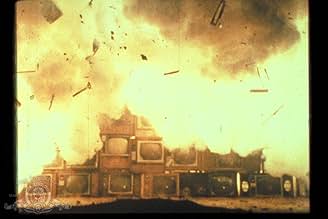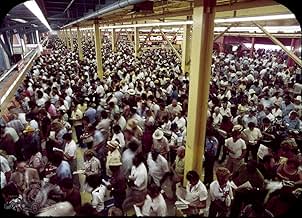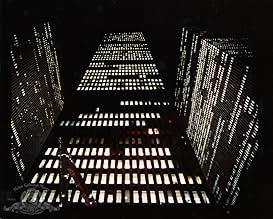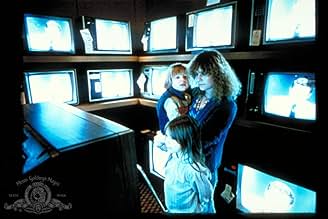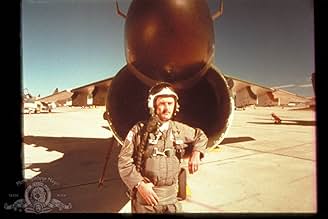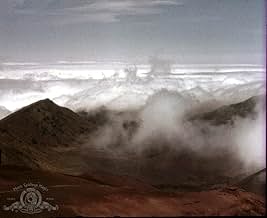CALIFICACIÓN DE IMDb
8.2/10
44 k
TU CALIFICACIÓN
Una colección de fotografías expertas con una trama poco convencional.Una colección de fotografías expertas con una trama poco convencional.Una colección de fotografías expertas con una trama poco convencional.
- Dirección
- Guionistas
- Elenco
- Premios
- 6 premios ganados y 1 nominación en total
Edward Asner
- Self - On TV
- (material de archivo)
- (sin créditos)
Pat Benatar
- Self
- (material de archivo)
- (sin créditos)
Jerry Brown
- Self - On TV
- (material de archivo)
- (sin créditos)
Johnny Carson
- Self - On TV
- (material de archivo)
- (sin créditos)
Dick Cavett
- Self - On TV
- (material de archivo)
- (sin créditos)
Marilyn Chambers
- Self - On TV
- (material de archivo)
- (sin créditos)
Sammy Davis Jr.
- Self - On TV
- (material de archivo)
- (sin créditos)
Lou Dobbs
- Self - On TV
- (material de archivo)
- (sin créditos)
Thomas Dolby
- Self - On TV
- (material de archivo)
- (sin créditos)
Linda Ellerbee
- Self - On TV
- (material de archivo)
- (sin créditos)
Jerry Falwell
- Self - On TV
- (material de archivo)
- (sin créditos)
Mark J. Goodman
- Self - On TV
- (material de archivo)
- (sin créditos)
Ted Koppel
- Self - On TV
- (material de archivo)
- (sin créditos)
Peter Sellers
- Self - On TV
- (material de archivo)
- (sin créditos)
Bill Tush
- Self - On TV
- (material de archivo)
- (sin créditos)
Opiniones destacadas
KOYAANISQATSI remains a profound statement over twenty years after its original release. the point then is the point now.
one of the great things about this film is that while the intrusion of man is initially presented as profane and abhorrent, ultimately there is found a symmetry to the human experience that is as organic as anything found in the `natural' world. i used to be tempted to perceive humans as the only species on the plant that didn't fit, that threw everything out of balance, as it were. but over time it has become apparent that even the blight of man on earth is a naturally occurring phenomenon. the evolution of life is the destruction of life. the circle is unbroken.
one of the great things about this film is that while the intrusion of man is initially presented as profane and abhorrent, ultimately there is found a symmetry to the human experience that is as organic as anything found in the `natural' world. i used to be tempted to perceive humans as the only species on the plant that didn't fit, that threw everything out of balance, as it were. but over time it has become apparent that even the blight of man on earth is a naturally occurring phenomenon. the evolution of life is the destruction of life. the circle is unbroken.
10epsilon3
Make no mistake -- you need to get into the right mood to properly enjoy this film. Try watching it with your cynical or populist friends and they'll pour scorn upon it. Don't try to convince others to 'get it' as they won't.
The best thing to do is to turn off all of the lights, pump up the sound and absorb yourself in the spectacle that unfolds on the screen. If you do this, you'll experience one of the most breathtaking, moving and exciting pieces of art ever. There are few films that reach these heights -- 2001: A Space Odyssey is the only one that instantly comes to mind.
Don't analyse it until it's finished. Talking through it will ruin it. I've found that the film works best on an emotional level so switch your brain off and just watch and listen. By the time it's finished, you'll feel like you've been on an exhausting and exhilarating journey that you'll want to take again not long afterwards.
The best thing to do is to turn off all of the lights, pump up the sound and absorb yourself in the spectacle that unfolds on the screen. If you do this, you'll experience one of the most breathtaking, moving and exciting pieces of art ever. There are few films that reach these heights -- 2001: A Space Odyssey is the only one that instantly comes to mind.
Don't analyse it until it's finished. Talking through it will ruin it. I've found that the film works best on an emotional level so switch your brain off and just watch and listen. By the time it's finished, you'll feel like you've been on an exhausting and exhilarating journey that you'll want to take again not long afterwards.
10desh79
"It is up for the viewer to take for herself what Koyanisqaatsi means. For some people it's an environmental film, for some people it's an ode to technology, for some people it's a piece of sh-t, for other people it moves them deeply. It depends on who you ask" - Godfrey Reggio
So, Koyanisqaatsi. Boring junk to some, an involving masterpiece to others, and God knows what other adjective-noun combinations are out there (you can probably guess my opinion from the rating above). Most of these descriptions are fairly subjective, but it would definitely be wrong to regard Koyanisqaatsi as anti-cinema. It is anything but. Cinema, in its purest form, is a marriage of sound and visuals; everything else is just decoration. Dialogue? Storyline? Koyanisqaatsi harks back to an age when cinema was simply a filmed record of a situation. Was it not the Lumiere brothers who are generally regarded as the first pioneers of cinema? And is it not the case that their films comprised of nothing more than situations like a couple feeding their baby, workers leaving a factory, or the (in)famous Train Leaving A Station, which went down in folklore as causing people to flee the auditorium in panic thinking they were about to be hit by a train as it approached them on-screen? Koyanisqaatsi is cinema returning to its roots, to the days when the possibilities for film as an art form were wide open, free of commercial constraints and fickle audiences too narrow in scope to accept anything other than what they view as the given norm.
In a way it's fairly irrelevant what Koyanasqaatsi meant to me on a personal level, though I might get to that later. What's important is what Koyanasqaatsi represents. It's an interesting attempt (and a successful one in my view) to illustrate how a narrative can be created simply by editing together seemingly loosely related scenes and images. It reminds me of another cinematic milestone, the Kuleshov experiment, in which two separate images where edited together to create a third meaning, and which helped establish what is now known as Russian montage (and speaking of the Russian montage tradition, anyone who has seen Vertov's The Man With The Movie Camera will no doubt find traces of it in Koyanisqaatsi and vice versa). Koyanisqaatsi takes it one step further, perhaps even to its logical conclusion, using editing to create a new meaning for the entire narrative as a whole. It works on a gut level and sparks an emotional response, in a way it demands a response, be it boredom, amazement... it really depends on the person (as illustrated by the Reggio quote above). As such it's an example of cinema at its most subjective.
Coming back to the influence Man With A Movie Camera no doubt had on this film, I think what Godfrey Reggio has done here is take this specific style of film-making and turn it into what I, personally, view as a cinematic statement on humanity- and our technology's relationship with the environment around us. It's a pessimistic film, filled with Cold War anxiety (though it hasn't lost any of its relevance) - and in retrospect, I also found it reminiscent of an age when America still had a strong avantgarde movement in the shape of people like Reggio or Laurie Anderson (and in a way it's an interesting coincidence that 1983 also gave birth to another experimental documentary, Chris Marker's Sans Soleil, which is equally rich in scope and tackles the same philosophical issues, albeit from a slightly different angle).
I really wonder if the western world could produce a film like this today, in an age where cinema audiences are more fickle than ever, demanding a cut every three seconds and some sort of "surprise twist" at the end, with hardly a niche left for the Godrey Reggios of this world. But in a way I suppose it doesn't really matter. Koyanisqaatsi, to me at least, is one of the richest cinematic experiences anyone could possibly hope to have, and I doubt I'll see a film which will move me quite like this for a long time to come.
So, Koyanisqaatsi. Boring junk to some, an involving masterpiece to others, and God knows what other adjective-noun combinations are out there (you can probably guess my opinion from the rating above). Most of these descriptions are fairly subjective, but it would definitely be wrong to regard Koyanisqaatsi as anti-cinema. It is anything but. Cinema, in its purest form, is a marriage of sound and visuals; everything else is just decoration. Dialogue? Storyline? Koyanisqaatsi harks back to an age when cinema was simply a filmed record of a situation. Was it not the Lumiere brothers who are generally regarded as the first pioneers of cinema? And is it not the case that their films comprised of nothing more than situations like a couple feeding their baby, workers leaving a factory, or the (in)famous Train Leaving A Station, which went down in folklore as causing people to flee the auditorium in panic thinking they were about to be hit by a train as it approached them on-screen? Koyanisqaatsi is cinema returning to its roots, to the days when the possibilities for film as an art form were wide open, free of commercial constraints and fickle audiences too narrow in scope to accept anything other than what they view as the given norm.
In a way it's fairly irrelevant what Koyanasqaatsi meant to me on a personal level, though I might get to that later. What's important is what Koyanasqaatsi represents. It's an interesting attempt (and a successful one in my view) to illustrate how a narrative can be created simply by editing together seemingly loosely related scenes and images. It reminds me of another cinematic milestone, the Kuleshov experiment, in which two separate images where edited together to create a third meaning, and which helped establish what is now known as Russian montage (and speaking of the Russian montage tradition, anyone who has seen Vertov's The Man With The Movie Camera will no doubt find traces of it in Koyanisqaatsi and vice versa). Koyanisqaatsi takes it one step further, perhaps even to its logical conclusion, using editing to create a new meaning for the entire narrative as a whole. It works on a gut level and sparks an emotional response, in a way it demands a response, be it boredom, amazement... it really depends on the person (as illustrated by the Reggio quote above). As such it's an example of cinema at its most subjective.
Coming back to the influence Man With A Movie Camera no doubt had on this film, I think what Godfrey Reggio has done here is take this specific style of film-making and turn it into what I, personally, view as a cinematic statement on humanity- and our technology's relationship with the environment around us. It's a pessimistic film, filled with Cold War anxiety (though it hasn't lost any of its relevance) - and in retrospect, I also found it reminiscent of an age when America still had a strong avantgarde movement in the shape of people like Reggio or Laurie Anderson (and in a way it's an interesting coincidence that 1983 also gave birth to another experimental documentary, Chris Marker's Sans Soleil, which is equally rich in scope and tackles the same philosophical issues, albeit from a slightly different angle).
I really wonder if the western world could produce a film like this today, in an age where cinema audiences are more fickle than ever, demanding a cut every three seconds and some sort of "surprise twist" at the end, with hardly a niche left for the Godrey Reggios of this world. But in a way I suppose it doesn't really matter. Koyanisqaatsi, to me at least, is one of the richest cinematic experiences anyone could possibly hope to have, and I doubt I'll see a film which will move me quite like this for a long time to come.
Godfrey Reggio's Koyaanisqatsi (1983) is a film with no actors, no storyline, and no dialogue. The only things we see during the experimental documentary's 87 minutes are natural landscapes, images of cities, and real people going about their regular lives. Yet from the very beginning, when we see the title of the film appear in blood-red characters and hear the voice of a bass soloist chanting the title like an incantation, it is difficult not to be swept away in captivation.
Filmed between 1977 and 1982, Reggio's film was noticed by directing great Francis Ford Coppola who eventually agreed to finance the project and give it chances for distribution. Minimalist composer Philip Glass was optioned to compose the score, and the result was, quite simply, astounding.
Koyaanisqatsi is a collection of familiar images presented through tinted lenses (figuratively speaking). The experimental nature of the project can be seen in the reduced and augmented speeds of images, the use of carefully manipulated edits, and the use of Glass's score to create ambience. There are times when the film exhibits an almost surreal quality more indicative of a twisted, futuristic, dystopian sci-fi epic than of our mundane world.
This is, however, what makes Koyaanisqatsi so successful. In presenting our world in a disquieting, unflattering light, the film forces us to ruminate on our place in the universe and the consequences of many of our actions. The film starts with serene, austere images of mountains, oceans, and forests, and the repetitiveness of Glass's score does not bore us nor call attention to itself, but simply washes over us, entrancing us and instilling a sense of tranquility.
It is not long before the untainted images are replaced by nuclear power plants, highways, skyscrapers, rubble, fire and ash, and hoards of ant-like beings (humans, of course) scurrying through modern urbanity. Most times, humans are filmed at low-frame settings (making for faster speeds), and as a result, they seem frenzied, compulsively making their way through the cities in a manner that seems more conditioned than voluntary.
Glass's score responds by heightening its tension and adding a semi-brutal nature to its repetitiveness. It is somewhat aversive, but at the same time exhibits a humorous and mocking quality. By cramming together so many images of humans behaving more like lab rats than higher, thinking beings and increasing the satirical nature of the score, the film invites us to consider just how depersonalized, mechanized, and out-of-control many aspects of our life are.
The conclusion of the film contrasts against the blackly comic nature of the previous section by instilling a sense of mourning and warning. As such, there is undoubtedly a political and environmental component inherent in this film, but this is the aspect that is, in my mind, most often misunderstood. Many critics (mostly detractors) have interpreted Koyaanisqatsi as a call to action, an invective that demands that we atone for the rape-like pillaging the human race has thrusted upon the natural environment. Following from this, these critics claim that the film's message is that we would enjoy the planet more if we were not here at all, thus presenting a contradiction, since we would not be here to enjoy it.
In my own personal view, the flaw here resides in viewing the film as a tirade and a call to action. I find Koyaanisqatsi very clearly to be not a cry for reform, but a demand for awareness and meditation. There is an inevitability in the actions of human beings and their disregard for the care of their surroundings, and the wonderful thing about this film is that it forces you to experience the consequences and at least take notice of what each of us is contributing. It does not let you get away with indifference and nonchalance.
For me, however, the political component is less important than the stylistic component, which is one near and dear to my heart: the use of music to enhance the forcefulness of images. I acknowledge the fact that some will not be able to stand the repetitiveness of Philip Glass's score (and it is very repetitive at some points). But if one can consider the motive behind the repetition, the music ceases to be oppressive and becomes sublime and entrancing. The score adds impact to an already stunning array of unforgettable images, the details of which I will not go into, so that one may see the film with fresh eyes.
I saw Koyaanisqatsi for the first time at a performance in which the visuals were projected onto a giant screen with the soundtrack being supplied by Glass and his ensemble, who had come for a live performance. I had barely made it in time, since I struggled to find a parking space and was drenched from running in the rain. The moment the film started, however, all of the accumulated tensions in my body completely dissipated. It was not at all a cerebral experience, but an instinctive one in which I enjoyed the images and sounds for their own sakes.
When I left the performance, I was in a hypnotic daze, transfixed by what I had just seen. My initial impressions haven't changed to this day. I loved this film, and while the political and environmental concerns it addresses are important, what really makes this film for me is the instinctive, visceral power of its images and sounds. Koyaanisqatsi maroons its audience in an alternate version of reality that sheds disturbing light on our lives, and yet at the same time, it produces an unforgettable cinematic experience that is pervasively engrossing.
Filmed between 1977 and 1982, Reggio's film was noticed by directing great Francis Ford Coppola who eventually agreed to finance the project and give it chances for distribution. Minimalist composer Philip Glass was optioned to compose the score, and the result was, quite simply, astounding.
Koyaanisqatsi is a collection of familiar images presented through tinted lenses (figuratively speaking). The experimental nature of the project can be seen in the reduced and augmented speeds of images, the use of carefully manipulated edits, and the use of Glass's score to create ambience. There are times when the film exhibits an almost surreal quality more indicative of a twisted, futuristic, dystopian sci-fi epic than of our mundane world.
This is, however, what makes Koyaanisqatsi so successful. In presenting our world in a disquieting, unflattering light, the film forces us to ruminate on our place in the universe and the consequences of many of our actions. The film starts with serene, austere images of mountains, oceans, and forests, and the repetitiveness of Glass's score does not bore us nor call attention to itself, but simply washes over us, entrancing us and instilling a sense of tranquility.
It is not long before the untainted images are replaced by nuclear power plants, highways, skyscrapers, rubble, fire and ash, and hoards of ant-like beings (humans, of course) scurrying through modern urbanity. Most times, humans are filmed at low-frame settings (making for faster speeds), and as a result, they seem frenzied, compulsively making their way through the cities in a manner that seems more conditioned than voluntary.
Glass's score responds by heightening its tension and adding a semi-brutal nature to its repetitiveness. It is somewhat aversive, but at the same time exhibits a humorous and mocking quality. By cramming together so many images of humans behaving more like lab rats than higher, thinking beings and increasing the satirical nature of the score, the film invites us to consider just how depersonalized, mechanized, and out-of-control many aspects of our life are.
The conclusion of the film contrasts against the blackly comic nature of the previous section by instilling a sense of mourning and warning. As such, there is undoubtedly a political and environmental component inherent in this film, but this is the aspect that is, in my mind, most often misunderstood. Many critics (mostly detractors) have interpreted Koyaanisqatsi as a call to action, an invective that demands that we atone for the rape-like pillaging the human race has thrusted upon the natural environment. Following from this, these critics claim that the film's message is that we would enjoy the planet more if we were not here at all, thus presenting a contradiction, since we would not be here to enjoy it.
In my own personal view, the flaw here resides in viewing the film as a tirade and a call to action. I find Koyaanisqatsi very clearly to be not a cry for reform, but a demand for awareness and meditation. There is an inevitability in the actions of human beings and their disregard for the care of their surroundings, and the wonderful thing about this film is that it forces you to experience the consequences and at least take notice of what each of us is contributing. It does not let you get away with indifference and nonchalance.
For me, however, the political component is less important than the stylistic component, which is one near and dear to my heart: the use of music to enhance the forcefulness of images. I acknowledge the fact that some will not be able to stand the repetitiveness of Philip Glass's score (and it is very repetitive at some points). But if one can consider the motive behind the repetition, the music ceases to be oppressive and becomes sublime and entrancing. The score adds impact to an already stunning array of unforgettable images, the details of which I will not go into, so that one may see the film with fresh eyes.
I saw Koyaanisqatsi for the first time at a performance in which the visuals were projected onto a giant screen with the soundtrack being supplied by Glass and his ensemble, who had come for a live performance. I had barely made it in time, since I struggled to find a parking space and was drenched from running in the rain. The moment the film started, however, all of the accumulated tensions in my body completely dissipated. It was not at all a cerebral experience, but an instinctive one in which I enjoyed the images and sounds for their own sakes.
When I left the performance, I was in a hypnotic daze, transfixed by what I had just seen. My initial impressions haven't changed to this day. I loved this film, and while the political and environmental concerns it addresses are important, what really makes this film for me is the instinctive, visceral power of its images and sounds. Koyaanisqatsi maroons its audience in an alternate version of reality that sheds disturbing light on our lives, and yet at the same time, it produces an unforgettable cinematic experience that is pervasively engrossing.
A very beautiful flow of clips, even though some of them should frighten more than intrigue.The tempo is also part of what makes is so captivating. The clips slowly builds up and creates an alarming story. At the same time every sequence stands on its own. The lack of words gives it an almost alien view of earth and man's relationship to the planet. Together with the score by Philip Glass it sucked me in and I have rarely been so focused on every frame throughout an entire movie. It must have been quite amazing to see this in a movie theater back in the 80's with the big screen, speakers and also i guess in a time when similar creations were more scarce than now. It's by far the most visual movie I have seen and the fact that it only relies on images and music to tell a story made it bypass my rational filters and made me fully present in the moment for 86 minutes straight.
¿Sabías que…?
- TriviaGodfrey Reggio was hooked on Philip Glass doing the music. He approached Glass through a mutual friend, and Glass replied, "I don't do film music." Reggio persisted, and finally the friend told Glass that the tenacious guy was not going to go away without at least an audience. Glass relented, though he still insisted he wasn't doing the music. Reggio put together a photo montage with Glass' music as the soundtrack, which he presented to Glass at a private screening in New York. Immediately following the screening, Glass agreed to score the film.
- ErroresThe two explosions at about 18 minutes into the film were shot with anamorphic lenses and not properly desqueezed for the film's 1.85:1 aspect ratio.
- Citas
[last lines]
title card: Translation of the Hopi Prophecies sung in the film: "If we dig precious things from the land, we will invite disaster." - "Near the Day of Purification, there will be cobwebs spun back and forth in the sky." - "A container of ashes might one day be thrown from the sky, which could burn the land and boil the oceans."
- Créditos curiososEnd credits go over mashed voice recordings in English ranging from call operator answers to television news.
- ConexionesEdited into Wide Awake (2006)
Selecciones populares
Inicia sesión para calificar y agrega a la lista de videos para obtener recomendaciones personalizadas
Detalles
- Fecha de lanzamiento
- País de origen
- Sitio oficial
- Idiomas
- También se conoce como
- Koyaanisqatsi: Life Out of Balance
- Locaciones de filmación
- San Onofre Nuclear Generating Station, San Diego County, California, Estados Unidos(as seen from San Onofre State Beach)
- Productoras
- Ver más créditos de la compañía en IMDbPro
Taquilla
- Total en EE. UU. y Canadá
- USD 1,723,872
- Total a nivel mundial
- USD 1,728,699
Contribuir a esta página
Sugiere una edición o agrega el contenido que falta


